The epochal industry trend toward the use of IP is of course quite advanced on the audio side, and thus seen across the aisles of Hall 8 in a big way, writes IBC Daily reporter Mark Hallinger.
That being said, IP in video production is following the audio world in to the brave, less costly, and hopefully super-efficient, flexible world of IP.
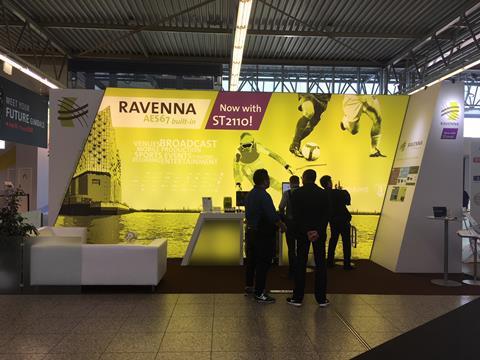
“If you go back only perhaps two shows ago, AoIP was more conceptual. It was talked about as a big trend, but people were still figuring it out in the real world,” said Joshua Rush, VP of Marketing for Audinate, a Hall 8 stalwart. “But this year I think the theme of this show is that it is very real , and being done.”
Rush said the Audinate booth at IBC saw a steady stream of customers for whom AoIP is no longer conceptual or in theory: “These people — OB trucks, broadcast facilities, stadiums and education facilities that have standardised on Dante — these are the people out there doing it and using it today.”
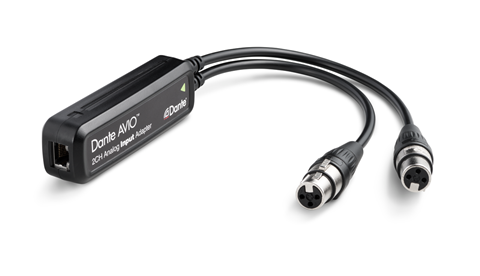
Audinate’s offerings at IBC2018 reflected the seemingly maturing market. One new range is aimed at making it easier to integrate existing gear at a facility in to a more modern network. The AVIO family of adapters allow the easy connection of legacy analogue and digital audio equipment to Dante networks and Dante-enabled products. The family is comprised of four different adapters: line-in and line-out analogue adapters, a bi-directional AES3/EBU adapter and a bi-directional stereo USB adapter.
While one of the early and big players in AoIP was Audinate, and its Dante networking technology was seen in scores of products on various stands across Hall 8 and elsewhere, the Ravenna technology for real-time transport of audio and other media data over IP networks also had a strong presence in Hall 8. While the Ravenna stand was just outside the Hall 8 main entrance, its yellow-shirted personnel could be seen streaking across the floor to and from partner stands.
Ravenna said IBC2018 was its busiest since its launch back at IBC2010. The company said this was a consequence of the increasing adoption of the AES67 interoperability standard championed by RAVENNA since its introduction in 2013, and now ST2110 which looks after the audio part of the video-over-IP transmission.
No fewer than eight Ravenna partners launched new products at IBC, with the majority located in Hall 8. One example that minds the legacy audio gap was Qbit’s QARION RAVENNA Interface Series, which interfaces AES3 and analogue audio with RAVENNA/AES67 networks.
IP in video catching up
IP in various video aspects of media has a long history, but in both live production and certain playout or MAM applications it has been playing catch up with audio.
One headline sale announced from the floor was Switzerland’s tpc purchasing a DYVI switcher from Hall 8’s biggest exhibitor EVS. The DYVI will take its place at a tpc Zurich facility that will be entirely IP-based, using the SMPTE 2110 standard. The CTO of tpc noted that the new facility’s programing needs to be done with technology that can use IP-connectivity to operate quickly and reliably for both live news and sport applications.
James Stellpflug, VP of Product Marketing for EVS, said that IP in video was really moving beyond just standards and interoperability issues on an elemental level, to tools that are starting to add value for a broadcaster or content producer.
“It used to be ‘We have SDI wire,’ then it became ‘Now I have IP cables,’ said Stellpflug. “Now, it is because I have IP this changes the way my production works, this makes it more efficient.”
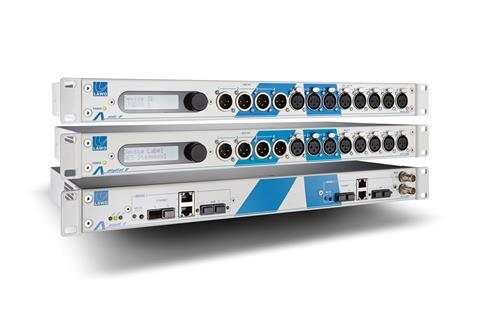
Another big IP sale from Hall 8 announced at the show was CBC / Radio-Canada choosing Lawo’s VSM IP broadcast control for its new Montreal Broadcast Centre. VSM will serve as the master IP control system for the facility, which will be fully compliant with SMPTE 2110.
The planned 39,000 m² (418,000 sq. ft.) facility will host several production areas dedicated to news, TV and post activities, fed by dozens of studios, control rooms, editing and infographic workstations and audio mixing suites. Its Master Control and Playout Room is designed to host 40 TV channels, 40 web channels and 160 radio channels.
But it wasn’t just the big players talking about IP. There were a lot of packet based audio products on the floor.
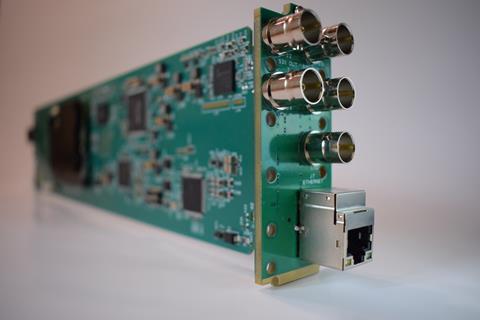
BHV Broadcast, for example, announced plans to launch its streamGear series of openGear IP to SDI cards. The range features quad core processing and fast graphics capability and can support broadcast, graphics or streaming applications by serving as a hardware engine or as a standalone receiver.
AoIP in talkback has been around for several years now and products continue to be refined. Sonifex premiered its first Dante commentary units, which use Dante AoIP together with 4-wire connections to bridge the gap between old and new technology.
Also at IBC2018 was the new Telos Infinity IP Intercom, which converges voice communication and contribution audio on a single IT backbone employing the latest standards-based VoIP and Livewire+ AES67 AoIP transport.
Berlin-based Stage Tec presented its latest board for its NEXUS network – the NEXUS Fibre and IP-Interface (XFIP). The board is used in the NEXUS Base Devices and is a result of the collaboration between DirectOut and Stage Tec. It uses DirectOut’s AES67.IO module, which has a full AES67 implementation. It supports the creation of a non-proprietary audio network via an audio-over-IP connection.
In things like playout, MAM, and cloud softwares for a variety of applications, IP continued to go deeper and become more common.
Pavlin Rahnev, CEO of Playbox Neo, said the transition from baseband and SDI in the cloud and in-house playout arenas had moved from talks that were often theoretical just a few years ago, to reality.
“In 2018 moving in to 2019 there has been more talk about deployments, and some have already deployed file-based playout and IP infrastructures,” said Rahnev. He also noted that IP and cloud playout was accelerating the number of channels, which was not as much the case with 4K, another industry trend.
According to Jay Batista GM of US operations for MAM specialist Tedial, the overall strategic goal driving things at IBC2018 was an emphasis on greater efficiency.
“Attendees are seeking any innovative technology that enables cost cutting measures, increases the output of existing staff or applies machine learning to tasks to reduce labour,” said Batista. “We saw strong interest in our efficient HYPER IMF and Version Factory, and we not only won an award for our exciting SMARTLIVE live sports production tool that doubles or triples an operator’s output capacity, we had a steady stream of deeply interested prospects.”
For its part Pebble Beach Systems had a demo on another subsector where the cloud and IP have been revolutionary: Disaster Recovery (DR). Pebble showed its Orca virtualised playout solution in a full cloud-based business continuity application, with one channel running locally on the Pebble stand, and the backup channel running in the AWS public cloud.
While virtualised playout has been growing in DR for a while now, this often meant a cut down operation compared to the main facility. The demo Pebble had at IBC ensures there is absolutely no difference between the main and the virtualized DR systems — operators have access to the exact same interface, features and devices, using what is effectively a software playout layer.
The increasing use of AI in media softwares that was noted at IBC last year continued. Dalet, for example, showcased the latest version of its Galaxy five platform for MAM and workflow orchestration, which now features Dalet Media Cortex. Media Cortex SaaS enables Dalet Galaxy five customers to connect and orchestrate smart combinations of cognitive services while managing data alignment.
Tokyo 2020
Quickly deployed and even temporary cloud-based channels might get a boost from short term events like big sport contests or elections. At IBC2018 the 2020 Tokyo Olympics started to become a part of a few conversations.
It can safely be predicted that the sheer volume of material coming out of Tokyo will be enormous, and the resolutions will be higher than ever given that the event is in the home of NHK. It also could encourage another Hall 8 trend—immersive audio.

“Sports has always been a driving factor for Surround Sound in audio,” said Lars-Olof Janflod, marketing & PR director, Genelec. He noted the importance of the Tokyo Games and the 22.2 channels of audio promised with NHK’s 8K Super Hi-Vision.
For its part, Genelec used IBC as the European launch of its new high-SPL arrivals, the S360 two-way monitor and the 7382 subwoofer, and we’ll be showcasing them working as part of a 7.1.4 system with a selection of fine immersive material. Both models are ideal for any professional application that demands high acoustic power or listening at a distance; from large immersive setups in post-production studios or film mixing stages to play-live monitoring in music production or EDM playback.
Genelec also welcomed guest engineer and producer Bernard Löhr, who is normally found behind the console at Benny Andersson’s studios in Stockholm, at a Saturday event. He shared his experiences mixing the music for the Mamma Mia! Here We Go Again movie in immersive.
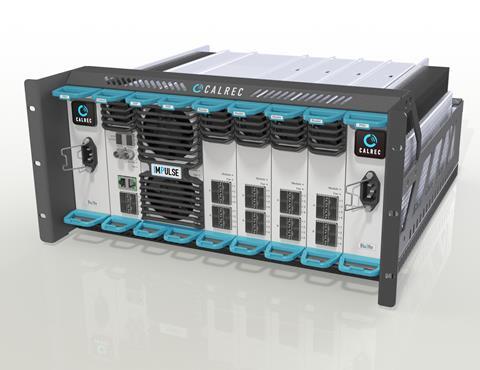
In more news relevant to our immersive future, Calrec previewed its new Impulse core, its next generation audio processing platform. The Impulse core is an audio processing and routing engine with AES67 and SMPTE 2110 connectivity that shows a clear direction for Calrec’s future development, giving customers a fully defined upgrade path as they transfer to IP infrastructures.
Notably, Impulse provides 3D immersive path widths and panning for NGA (next generation audio) applications. Buses, monitoring and metering are available. Height and 3D pan controls are provided, and paths of all widths can co-exist within a mix and be routed to/from each other with flexible panning and downmixing built in.
In similar news, the latest version of the System T’s software-based architecture from Solid State Logic now incorporates the channel, bus, panning, and monitoring requirements for immersive audio. These include 3-axis coordinate panning, wider channels and busses, intelligent downmixing, 12-channel monitoring, and upgraded processing tools.
While it’s easy for people who aren’t RF engineers to walk right by the transmission vendors common in Hall 8, Gates Air actually had an unexpected transmitter sale from the floor at IBC2018, which could not be discussed in any greater detail other than to say it was from a country in continental Europe.
There is something fuelling transmitter sales in 2018 — spectrum realignments to free up the high band of television spectrum mean channels have to be reassigned. Frequency agility in your transmitter suddenly matters a lot. If you have an older unit that is not frequency agile, you’ll need a new transmitter.
A decade or so ago loudness crashed on the scene and scores of products and standards followed. It’s still a trend, if something that really seems quite established and standardised by now. What’s new along a similar vein: Speech intelligibility, perhaps. RTW teamed up with Fraunhofer IDMT on a real-time analysis tool that clearly displays the current level of speech intelligibility in an audio project.
While Hall 8 was not a huge place for trends such as 4K or HDR or AR/VR, a lot of displays on these subjects could be found in the Future Zone.
On the main Hall 8 floor, both Zoom and RØDE had ‘future thinking’ mic news. Zoom claimed its new H3-VR virtual reality audio recorder is the only recorder that can capture and decode spacial audio all in one device. Australian pro audio vendor RØDE Microphones, located on the HHB stand at IBC, announced that the SoundField by RØDE NT-SF1 360° Surround Ambisonic Microphone was now shipping.
What else? i3 European Media Innovation showed three European consortium projects, funded by public and private partnerships, and nine start-ups on its stand which had the feel of a mini Future Zone. The i3 project supports research technologies and projects financed by the European Commission, with an integrated approach from research to innovation and through to market deployment.
One of the three specialist industry consortium projects on display was VR-Together, which aims to offer social virtual reality experiences, and integrate diverse media formats into the vehicle of virtual reality for real-world use cases such as business meetings, family experiences, education, games and more. The second consortium project, ImAc, sought to create software that can translate media into multi-sensory experiences in order to break down barriers of language, understanding, sensory limitations and ability. The final project was HRadio, which seeks to leverage the full potential of hybrid technology for radio in the new multimedia and multi-platform era.
Read more IBC2018 review: IP - a done deal?
























No comments yet